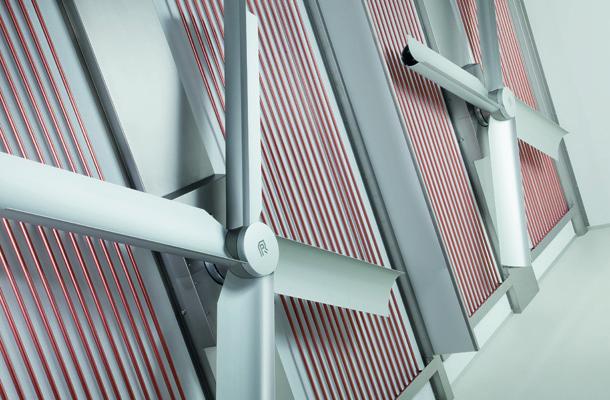The example below illustrates how ESM™ translates into savings for the hatchery, based on results in a hatchery with European climate conditions, to estimate energy usage over one year (see Table 1) for 70.9 million day old chicks produced during that time.
What is immediately clear is the impact of electricity consumption by the setters: a striking 42 per cent of total energy consumption in the hatchery. This is not in fact so surprising, as these setters run 24 hours per day, seven days a week. However this factor creates a priority focus on where savings can be made – and the question must be whether it is feasible to deliver significant savings on setter electricity consumption, without having an adverse effect on the hatchability, uniformity and robustness of the day old chicks.
| Annual consumption (€) | |
| Electricity for Setters: | 150,000 (42%) |
| Heating for Setters & Ventilation: | 60,000 (17%) |
| Cooling for, Setters, Hatchers & Ventilation: | 59,000 (17%) |
| Electricity for Hatchers: | 51,000 (14%) |
| Electricity for Ventilation & Various: | 33,000 (9%) |
| Total: | € 353,000 (100%) |
n1 = 180 rpm
n2 = 25% lower = 0.75*180 = 135 rpm
P1 = 1000 W
Power: 
n1 = rotations per minute at original pulsator speed
n2 = rotations per minute at pulsator speed reduced by 25%
p1 = power at n1 pulsator speed
p2 = power at n2 pulsator speed
This example shows the significant impact of reducing rotation speed on shaft power - 75% x 75% x 75% = 42% energy consumption, a reduction of 58% .
For optimised incubation, it is important to maintain a good incubation climate. Pas Reform Academy therefore studied the following:
- By what percentage can we safely reduce fan speed, without affecting hatchability and day old chick quality?
- When during the 18-day setter cycle can fan speed be reduced safely and effectively?
Energy Saving Module (ESM™)
In recent years, we have seen that using the ESM™ module saves energy and does not undermine chick quality in any way, due to the incubator’s innovative fan design and the metabolism-based RPM control of the Energy Saving Module. Heat exchange between the embryos and their incubation environment is high during the first and second days of incubation (heating), low during days 3-12 and increases to high levels again from day 13-18 (cooling).
Tests show that with SmartSet™’s Delta Pulsator and SmartSetPro™’s Vortex airpump, it is indeed possible to reduce RPM for 50 per cent of the time in the setter – and during days 3-12, to reduce RPM by 25 per cent, without adversely affecting hatchability rates, hatch window or day old chick quality.
Pas Reform’s Energy Saving Module (ESM™) therefore produces energy savings of (42%x58%x50% =)12 per cent for the entire hatchery, by providing finite control of fan RPM and actively controlling ventilation speed in the setter.
The impact of energy costs on ESM™ payback time
Of course, energy prices vary from one country to another – and this will have an impact on these savings. Pas Reform Academy has also calculated savings per setter for different countries in the world, to illustrate respective payback times (See table 2).
| Country | Price of KWh (in €) | Savings per year (in €) | Pay back time (in years)** |
| Brasil | 0,10 | 1.488 | 1.3 |
| India | 0,11 | 1.637 | 1.2 |
| Indonesia | 0,06 | 893 | 2.2 |
| Italy | 0,13 | 1.934 | 1.0 |
| Mexico | 0,08 | 1.191 | 1.6 |
| Netherlands | 0,09 | 1.339 | 1.5 |
| Russia | 0,09 | 1.339 | 1.5 |
| Spain | 0,09 | 1.339 | 1.5 |
| South Africa | 0,06 | 893 | 2.2 |
| South Korea | 0,06 | 893 | 2.2 |
| USA | 0,07 | 1.042 | 1.9 |
Table 2. ESM™ investment pay back calculation for different countries
* Based on the energy consumption of a setter with 115,200 egg capacity/year; Energy usage without ESM™ per year in KWh: 41,714; Energy usage with ESM™ per year in KWh: 26,830; Savings per year (in KWh): 14,884|
** Based on Investment price for ESM™ upgrade kit of € 1,950, Ex Works Zeddam, Netherlands
Easy installation means rapid access to savings
To upgrade Pas Reform setters with ESM™ is a simple procedure, that can be undertaken by the hatchery’s own technical personnel. Specialist skills or a visit from a Pas Reform technician are not required.
The ESM™ upgrade kit comes ready for installation, with clear instructions in a simple, step-by-step manual for the installation of the ESM™ module and the required software update process. Within hours, you could be making substantial energy savings every day.
More questions?
For SmartSetPro™ Setters or SmartSet™ setters with capacities of 76,800, 57,600, 38,400 or 19,200 eggs, or varying KWh prices for your location, please contact your nearest Pas Reform representative, who will be happy to calculate potential savings specifically for your hatchery and location at no charge to you – or contact Mr. Erik Meijer, service manager Pas Reform Hatchery Technologies, by telephone on +31 314 659111 or by email at e.meijer@pasreform.com.
